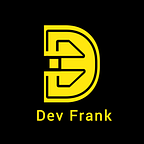Flowchart is a type of diagram that visually represents a workflow r process using a set of symbols or icons to denote different actions / decisions / steps within the process with arrows showing the direction of the flow.
It is a logic diagram used to describe each step that the program must perform to arrive at the solution.
Flowchart is also a logic tool used for showing an algorithm in graphics form. You must prepare a Flowchart before coding.
Flowcharts are used across many different professions to help analyze, design, document, and/or manage a workflow or process
Why use Flowchart?
Similarly to pseudo code, flowcharts provide another way of approaching and/or understanding a workflow. Another benefits is that, when done well, flowcharts can be understood by non-develops and by develops that do not know the language the process is written in.
FLOWCHART SYMBOLS
This type of diagram is extremely versatile and is used across many professional fields. Due to the number of industries using Flowcharts, many sets of symbols and styles have been created with a specific industry in mind. A good symbol set to use is the ISO 5807 symbol set, as they are well-known and often used in the technology industry.
- START/END
- Shape is a rounded rectangle
- Start is required of all Flowcharts
- It indicates the start or termination of a Flowchart
- Some Flowcharts may not have an END.
2. PROCESS
- Shape is rectangular
- Process involves the action performed or the “verb” part of the flowchart.
3. INPUT/OUTPUT
- Shape is a parallelogram
- Indicates that manual operation is needed. INPUT (entering data) OUTPUT ( displaying result).
Examples include
Type in the weight
Check the balance
Time the operation
4. DECISION
- Shape is a rhombus
- Outcome is either YES or NO
- Used to ask question whose answer determines the route taken from the question.
- Arrow from the bottom is YES/ TRUE, while arrow from the sides is NO/FALSE.
Examples
Is the number larger than 10?
Does the weight meet specifications?
Has the count been reached ?
5. ARROWS
- Arrows indicate the flow of the chart
- Arrows are drawn from the output of one block to the input of another
- Only one arrow can represent outputs
- Multiple arrows may represent inputs
- Arrows from the bottom is YES/ TRUE, while arrow from the sides is NO/FALSE.
6. CONNECTOR
- It is used to indicate where the flowchart continues
Examples of Flowcharting
- Flowchart for finding the sum of two inputted numbers
2. Flowchart for printing all even numbers between 1 to 20
3. Flowchart for printing Fibonacci numbers ( supposing N = 10)
PSEUDO CODE
Pseudo code is a high-level description of a computer program or algorithm that uses a mixture of natural language and informal programming language-like syntax.
Pseudocode is a step-by-step plan written in simple language to explain how to solve a problem or perform a task. It’s a way for people, even if they’re not programmers, to understand and communicate the logic of a solution without getting into the details of actual programming code.
It provides a way to outline the logic and structure of a solution without adhering to the specific syntax rules of a programming language.
Pseudocode is often used during the planning and design phase of software development.
It’s a way of breaking down a process into simple, understandable steps without worrying about specific language rules or syntax. Pseudocode helps in planning and communicating the solution before diving into actual programming.
Let’s assume you want to make a sandwich. Pseudocode for making a sandwich might look like this:
1. Start
2. Get Bread
3. Get Peanut Butter
4. Spread Peanut Butter on Bread
5. Get Jelly
6. Spread Jelly on Bread
7. Put the Bread Together
8. End
- Example of pseudo code for a simple algorithm to find the sum of two numbers:
1. Start
2. Input num1
3. Input num2
4. Set sum = num1 + num2
5. Display sum
6. End
2. Factorial Calculation:
1. Start
2. Input n
3. Set result = 1
4. For i from 1 to n
5. Multiply result by i
6. Display result
7. End
3. Simple Interest Calculation:
1. Start
2. Input principal, rate, time
3. Set interest = (principal * rate * time) / 100
4. Display interest
5. End
Characteristics of pseudo code
- Informality: Pseudocode is less strict than actual programming languages, allowing for a more natural and flexible representation of algorithms.
- Readability: It focuses on clarity and ease of understanding, using plain language to describe steps and logic.
- Abstraction: Pseudocode abstracts away specific programming language details, enabling a programmer to concentrate on the algorithm’s logic.
- Structure: Pseudocode typically employs control structures like loops (e.g., "for" and "while") and conditionals (e.g., "if-else") to represent program flow.
Amazing, you have reached the end and have already become more smarter, valuable, and productive just by learning about Programming Tools ( Flowchart and Pseudo Code).
The next step is to implement them. Good luck!
Thanks for reading; if you liked my content and want to support me, the best way is to
1. Follow me on medium
2. Connect With Me On X, LinkedIn and Github, where I keep sharing such free amazing content on programming
